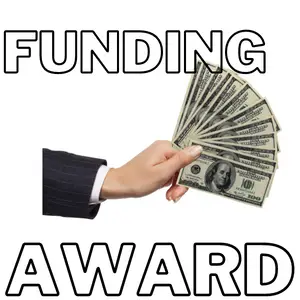Microgrants are small, typically non-repayable sums of money, awarded to individuals, small businesses, or non-profit organizations.
These grants provide much-needed financial assistance to kick-start initiatives, fuel creative projects, or propel entrepreneurial activities.
Their impact in fostering innovation, promoting social change, and aiding community development can’t be overstated.
The Anatomy of Microgrants
Understanding the structure and the essence of microgrants helps in deciphering their unique impact. These grants usually range from $500 to $5,000, though this can vary based on the granting organization. The significant aspect about microgrants is their focus on grassroots initiatives, local innovation, and promoting individual agency in social and economic activities.
The primary attraction of microgrants is their low barrier to entry. Traditional grants often come with strings attached such as lengthy applications, strict eligibility criteria, and bureaucratic red tape.
On the contrary, microgrants are accessible, less stringent, and appeal to a broader demographic of applicants, including students, artists, start-ups, and marginalized communities.
High Impact, Low Investment: The Power of Microgrants
In the world of philanthropy and funding, microgrants are a bit like the humble mustard seed – small, but capable of tremendous growth. By nature, these small grants can incite significant societal changes. From empowering individuals and small businesses to fueling creativity and social initiatives, microgrants provide the seed money that often makes the difference between an idea dying on the vine or flourishing into a transformational project.
Examples of Microgrants in Action
Here are twenty practical examples of microgrants:
1. Awesome Foundation: A global community advancing the interest of awesome in the universe, $1000 at a time.
2. Pollen Midwest’s Match the Hive: Offers a $1000 microgrant to individuals or organizations for projects that intersect art and civic engagement.
3. COVID-19 Rapid Response Fund: Offered microgrants for home-based and street vendors impacted by the pandemic.
4. DukeEngage: Provides $500 microgrants for students to create civic engagement projects in their home communities.
5. Black Entrepreneurship Grant: Aimed at fostering Black-owned businesses through grants ranging from $500 to $5,000.
6. Ioby’s Artists Lead! program: Empowers artist-led projects that create community impact with grants up to $15,000.
7. Do Something Microgrant: Offers $500 microgrants to young people (ages 5-25) for community service or activism projects.
8. Young African Leaders Initiative (YALI): Provides small grants to its members in Africa to fund change-making projects.
9. The Pollination Project: Offers seed grants of $1000 for social change initiatives worldwide.
10. Leeway Foundation Art and Change Grant: Provides microgrants of up to $2,500 for art and social change projects in Philadelphia.
11. Halstead Grant: Gives $7,500 cash grant to emerging jewelry artists.
12. Surdna Foundation Artist Regranting Program: Supports artists with up to $5,000 for projects that connect art with social justice.
13. The Women’s Microfinance Initiative: Provides small grants to women in East Africa to start small businesses.
14. Davis Projects for Peace: Offers $10,000 grants for grassroots projects addressing the theme of peace.
15. Artist Grant: Gives $500 grants to visual artists worldwide four times a year.
16. Peace First Challenge: Provides mini-grants for youth-led projects focused on creating peaceful communities.
17. National Geographic Early Career Grant: Provides funding for scientists, conservationists, educators, and storytellers.
18. The Aaron Siskind Foundation: Offers cash grants to photographic artists.
19. The Hopper Prize: Offers $1,000 grants for artists globally.
20. Artwork Archive’s Art Business Accelerator Grant: Provides $2,500 for visual artists to invest in their art businesses.
Microgrants, while being diminutive in size, have a prodigious potential for creating change. They offer an egalitarian approach to funding, democratizing access to capital for individuals and communities who may not otherwise have the means to finance their innovative ideas or projects.
Microgrants are a testament to the adage “small is beautiful.” They allow donors to make a meaningful impact, often in their own communities, without needing to provide significant sums of money. In the dynamic world of grant-making, they are a beacon of hope for grassroots innovators, social entrepreneurs, and community activists alike.
In a future increasingly shaped by innovation and entrepreneurship, the role of microgrants will only become more crucial. As we strive to create more inclusive and resilient societies, it is essential that we support and promote the efficient and effective use of these grants. After all, the biggest changes often come from the smallest seeds.




